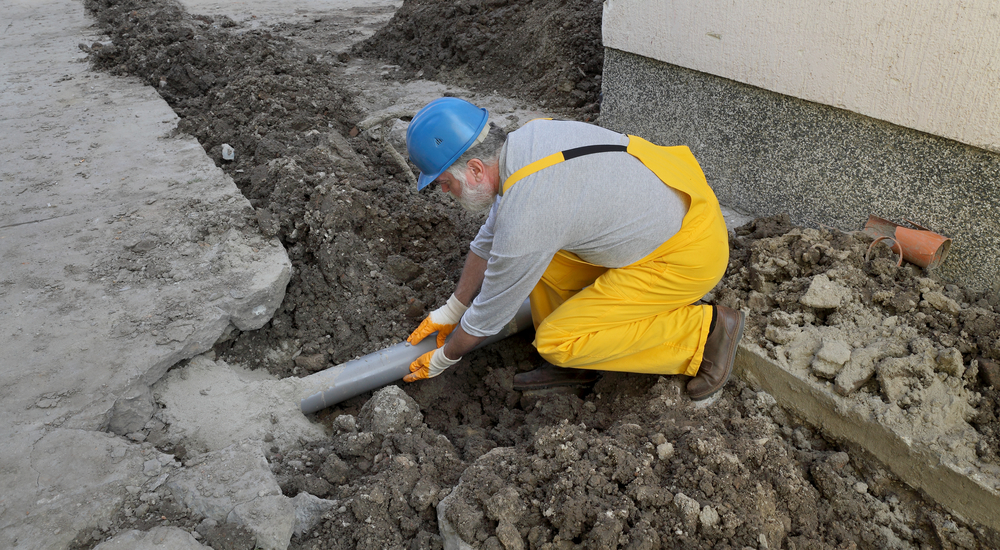Building Over Drains

What precautions should you take?
Whether you are planning to build an extension on your property, or building something new, you can encounter challenges when it comes to the location of the drainage system – particularly if your plans include building over drainage. Concrete and construction materials can also cause blockages even if you are not building directly over the drain pipe, so if you intend to build over drains, or carry out construction nearby, there are both regulations and practical concerns that you must consider. Doing so at the earliest possible stage will help you to avoid costly mistakes.
Here, the drainage experts at Lanes Group explain how you should approach building over drains at the planning stage, and the regulations you need to understand to ensure that your project does not pose any risk to the existing drainage system.
Why do I need a drainage survey?
It can be difficult to establish where the drains are in a property if you are relying on water authority records. These records will usually only show the main drains in the vicinity of a property, and in many cases will not include the drains within the property location itself, so while these may be a useful starting point, they will not usually be comprehensive enough to rely on for planning purposes.
In such cases, it may be useful to conduct a survey of the drains in the area, to ensure that you have a clear understanding of the workings below ground for guidance. In most cases, this can be achieved using CCTV technology, which eliminates the need for surveyors to dig up ground or enter the pipe/pipes. This is ideal if you are planning an extension to a property in which you are currently living, as this can minimise any disruption while the survey is underway.
What do I need to know about my property’s drainage system?
You may not need a drainage survey, as long as you are able to access accurate information about the locations and functions of the drain pipes beneath the area where you intend to build. If you are unable to account for the exact locations of drains, there are serious risks involved when carrying out a construction development project nearby.
This not only includes the risk of damaging existing pipes, but of creating bigger ongoing problems by cross-connecting foul and surface water drains together.
Surface water drains carry away rainwater from gutters, driveways and other hard surfaces around a property. If you do not have surface water drains, water may instead drain via public sewers or highway drainage. Because this water does not contain contaminants, it does not need to be treated and can simply drain away, which is where this type of drainage differs from foul water drainage.
Foul drainage carries water away from bathrooms, kitchens and utilities like washing machines, and because of the presence of contaminants, this water should not be drained alongside surface water.
By inadvertently cross-connecting these drainage systems, you risk creating significantly more foul water than necessary by contaminating surface water, or causing pollutants not to be treated properly.
Public drains
One important thing to bear in mind when building over drains is that a building’s foundations cannot lie along a public drain, and must either cross the pipe at an angle or run parallel to it on either side. This regulation can require you to adjust the pipe size, dimensions or orientation of your planned construction, so it is vital to consider this and locate both public and private drains accurately during the planning phase.
If you intend to build within three metres of a public sewer, or within one metre of a public lateral drain, you will usually need approval and oversight from your local water authority before you begin.
You should ensure that these challenges are resolved (or at least understood) before you apply for any planning permission you might need. Otherwise, you may discover later that the plans you have submitted are not feasible due to the locations of the drains, and as a result you may need to return to the drawing board with your plans and resubmit your application.
For more detailed information about the restrictions and regulations with regard to drains, you can find the relevant statutory guidelines in Drainage and waste disposal: Approved Document H.
Seek expert advice
If you need a CCTV survey, contact the team at Lanes. We have experience consulting on domestic and commercial construction projects to ensure that drainage regulations are met, so if you are seeking expert guidance, get in touch.
You can call us on 0800 526 488, or use our online enquiry form to request a call back.







